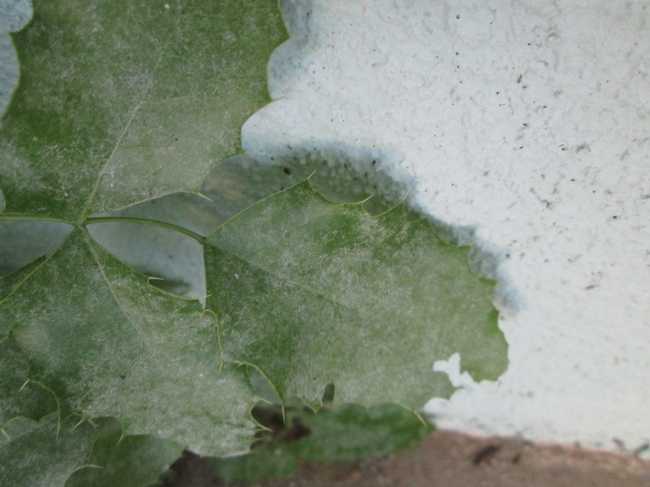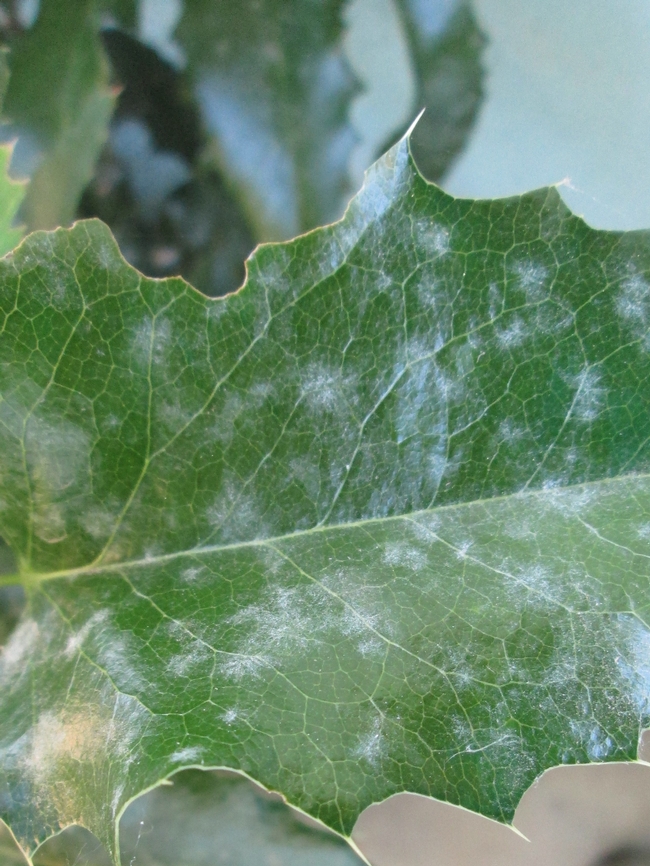I had a good patch of California Poppies (Eschscholzia californica) that had just finished flowering when I noticed the foliage on one of them was somewhat grayer in color than its neighbors. I did not think much of it at the time and put it down to being some sort of natural variant. As a Master Gardener I should be thoroughly ashamed of myself for not taking more notice!
The plant was suffering from powdery mildew, a fungal disease which, unlike most fungal infections, prefers dry weather. I have lived in the Owens Valley for ten years and so far have not seen much of this on my plants in previous years; even my variegated Euonymus which is renowned for its susceptibility has escaped.
Thanks to my inaction a few days later all the rest of my poppies were almost white from the infection, and then I noted the early symptoms on a previously healthy mahonia.
Many plants can be attacked by different species of powdery mildew and it is commonly seen in cucurbits – squashes, cucumbers, melons etc. as well as many fruits such as grapes, apples. Flowers such as zinnias, monarda and lupines, and roses are particularly prone.

It commonly begins on new growth, but if left unchecked can eventually distort the growing tips and buds as well as the leaves.
The fungal spores which overwinter in plant debris are spread by wind, and tend to attack plants in shady areas and also where there is not good air circulation, so avoid planting susceptible plants in those situations, and prune excess foliage to allow air circulation and sunlight to reach more of the plant.
Try to avoid the problem choosing resistant varieties when planting species known to be susceptible .
Some control may be achieved by pruning out affected areas if small, spraying with water to wash spores from the leaves, or spraying with a fungicide.
For more detailed information on how to avoid Powdery Mildew and methods used to contain or control it check out the following:
http://ipm.ucanr.edu/PMG/PESTNOTES/pn7494.html
http://ipm.ucanr.edu/QT/powderymildewcard.html
